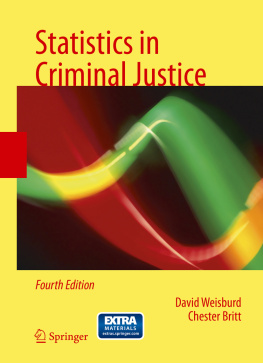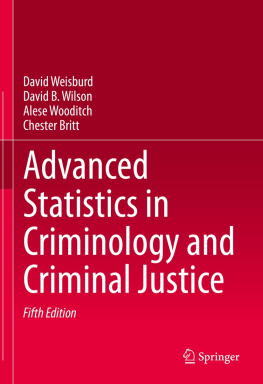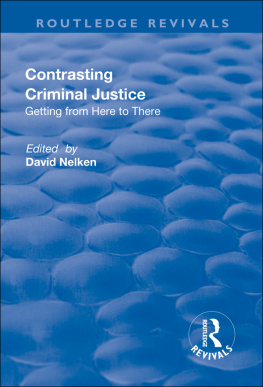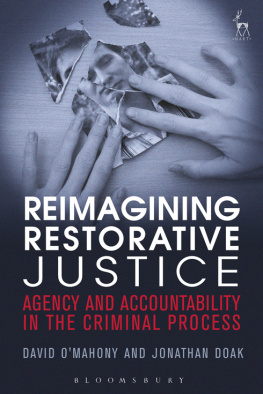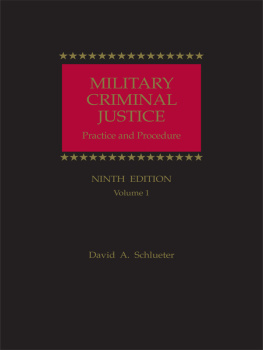Key principles
What is Our Aim in Choosing a Statistic?
What Basic Principles Apply to Different Types of Statistics?
What Are the Different Uses of Statistics in Research?
The purpose of statistical analysis is to clarify and not confuse. It is a tool for answering questions. It allows us to take large bodies of information and summarize them with a few simple statements. It lets us come to solid conclusions even when the realities of the research world make it difficult to isolate the problems we seek to study. Without statistics, conducting research about crime and justice would be virtually impossible. Yet, there is perhaps no other subject in their university studies that criminal justice students find so difficult to approach.
A good part of the difficulty lies in the links students make between statistics and math. A course in statistics is often thought to mean long hours spent solving equations. In developing your understanding of statistics in criminal justice research, you will come to better understand the formulas that underlie statistical methods, but the focus will be on concepts and not on computations. There is just no way to develop a good understanding of statistics without doing some work by hand. But in the age of computers, the main purpose of doing computations is to gain a deeper understanding of how statistics work.
Researchers no longer spend long hours calculating statistics. In the 1950s, social scientists would work for months developing results that can now be generated on a computer in a few minutes. Today, you do not need to be a whiz kid in math to carry out a complex statistical analysis. Such analyses can be done with user-friendly computer programs. Why then do you need a course in statistics? Why not just leave it to the computer to provide answers? Why do you still need to learn the basics?
The computer is a powerful tool and has made statistics accessible to a much larger group of criminal justice students and researchers. However, the best researchers still spend many hours on statistical analysis. Now that the computer has freed us from long and tedious calculations, what is left is the most challenging and important part of statistical analysis: identifying the statistical tools that will best serve researchers in interpreting their research for others.
The goal of this text is to provide you with the basic skills you will need to choose statistics for research and interpret them. It is meant for students of criminology and criminal justice. As in other fields, there are specific techniques that are commonly used and specific approaches that have been developed over time by researchers who specialize in this area of study. These are the focus of this text. Not only do we draw our examples from crime and justice issues; we also pay particular attention to the choices that criminal justice researchers make when approaching statistical problems.
Before we begin our study of statistics in criminal justice, it is useful to state some basic principles that underlie the approach taken in this text. They revolve around four basic questions. First, what should our purpose be in choosing a statistic? Second, why do we use statistics to answer research questions? Third, what basic principles apply across very different types of statistics? And finally, what are the different uses for statistics in research?
The Purpose of Statistics Is to Clarify
It sometimes seems as if researchers use statistics as a kind of secret language. In this sense, statistics provide a way for the initiated to share ideas and concepts without including the rest of us. Of course, it is necessary to use a common language to report research results. This is one reason why it is important for you to take a course in statistics. But the reason we use statistics is to make research results easiernot more difficultto understand. For example, if you wanted to provide a description of three offenders you had studied, you would not need to search for statistics to summarize your results. The simplest way to describe your sample would be just to tell us about your subjects. You could describe each offender and his or her criminal history without creating any real confusion. But what if you wanted to report on 20 offenders? It would take quite a long time to tell us about each one in some detail, and it is likely that we would have difficulty remembering who was who. It would be even more difficult to describe 100 offenders. With thousands of offenders, it would be just about impossible to take this approach.
This is one example of how statistics can help to simplify and clarify the research process. Statistics allow you to use a few summary statements to provide a comprehensive portrait of a large group of offenders. For example, instead of providing the name of each offender and telling us how many crimes he or she committed, you could present a single statistic that described the average number of crimes committed by the people you studied. You might say that, on average, the people you studied committed two to three crimes in the last year. Thus, although it might be impossible to describe each person you studied, you could, by using a statistic, give your audience an overall picture. Statistics make it possible to summarize information about a large number of subjects with a few simple statements.
Given that statistics should simplify the description of research results, it follows that the researcher should utilize the simplest statistics appropriate for answering the research questions that he or she raises. Nonetheless, it sometimes seems as if researchers go out of their way to identify statistics that few people recognize and even fewer understand. This approach does not help the researcher or his or her audience. There is no benefit in using statistics that are not understood by those interested in your research findings. Using a more complex statistic when a simpler one is appropriate serves no purpose beyond reducing the number of people who will be influenced by your work.
The best presentation of research findings will communicate results in a clear and understandable way. When using complex statistics, the researcher should present them in as straightforward a manner as possible. The mark of good statisticians is not that they can mystify their audiences, but rather that they can communicate even complex results in a way that most people can understand.

